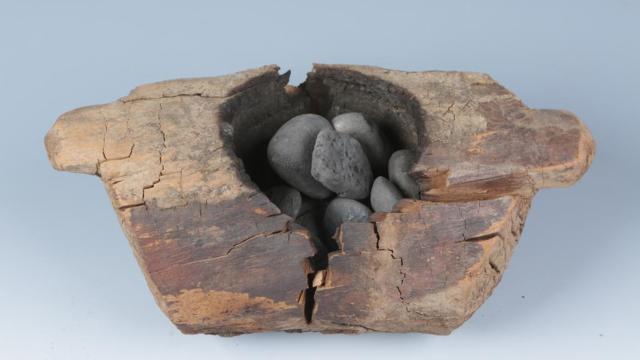Humans have been smoking, eating, and wearing cannabis for millennia, and a new study out Wednesday presents some pretty strong evidence of people using it explicitly to get high back in the first century BCE in Central Asia. The paper suggests that the plant could have been cultivated to be more mind-altering and used for an elaborate, possibly sacrificial funeral ritual.
The cannabis plant itself is native to Asia. Evidence, from both written literature and archaeological sites, has suggested that cannabis was first used and eventually grown as a crop by humans in the area thousands of years ago. But most cannabis back then, including the kind you’d find in the wild, was low in tetrahydrocannabinol, or THC, the psychoactive ingredient we associate with being stoned. This non-psychedelic cannabis, which we now refer to as hemp, was used for clothing, food, and medicine.
At some point, though, people began growing cannabis that was richer in THC for use as a psychoactive drug. But we’re less sure about when exactly this shift first occurred, and in what context it really happened. The researchers behind this current study, published in Science Advances Wednesday, say their findings provide some of the most direct and earliest evidence for a sort of ritualistic pot smoking.
The team’s discovery was accidental, according to the paper. They had run a chemical analysis of a wooden brazier excavated from a burial tomb site in the Pamir mountains of Central Asia, dating back to sometime around 500 BCE. Unexpectedly, they detected traces of cannabinoids in the brazier’s charred inner layer.
To make sure the finding wasn’t a lab mistake or something else, they then compared that chemical signature to ancient cannabis previously found at another burial site dated around the same time period, and found a perfect match. They subsequently examined the remaining brazier fragments and charred stones from the Pamir site, again finding cannabis.
More interesting than the cannabis residue itself, though, was the kind of pot-specific chemical compounds, or cannabinoids, they found. It was mostly made of cannabinol, a chemical known to show up in the air when THC-rich cannabis is burned. And given where it was found, the authors said, people probably inhaled the fumes from these braziers.
“I think this is a wonderful example of how closely intertwined humans are and have been with the biotic world around them,” study author Robert Spengler, laboratory director at the Max Planck Institute for the Science of Human History, said in a press conference announcing their findings this week. “Pre-modern humans had an intimate understanding of the plants around them.”
Because instruments like harps were also found at the site, you can imagine a very trippy scene indeed.
“We can start to piece together an image of funerary rites that included flames, rhythmic music, and hallucinogen smoke, all intended to guide people into an altered state of mind,” the authors wrote in the paper.
But there was a darker side to this discovery. According to other evidence at the site, including fatal wounds inflicted on the skulls and bones of those buried, the funerals could have involved human sacrifice. But it’s possible that the site and cannabis was used for a variety of non-sacrificial funeral rituals, too.
These rituals likely involved only the elite at first, the authors said, but might have trickled down to the rabble as time went along. And because ancient Asia was a major source of commerce and trade via the Silk Road, cannabis—as both a drug and hemp—was likely one of the many things that became popularised throughout the continent and eventually the world.
“Ultimately, this study illustrates that the earliest targeted use of cannabis with higher levels of THC originated in western China or the broader Central Asia region,” the authors wrote, “in contrast to the situation in East Asia where early cultivation of cannabis targeted the oily seeds for food and eventually the long stem cells as durable fibres for clothing and cordage.”
Interesting as the team’s discovery is, there are still a few mysteries left to solve. Namely, how did these ancient people actually come by the sticky icky used for their rituals? Obviously, they could have purposefully grown and maintained more potent THC-rich strains through domestication, as people now do.
But some cannabis plants are known to express more THC under certain conditions, and the mountainous, elevated regions of the area could have created a wild population of higher-THC weed, with domestication happening later.
“I think this is an open debate that our study puts out there, but doesn’t actually answer,” Spengler said.
